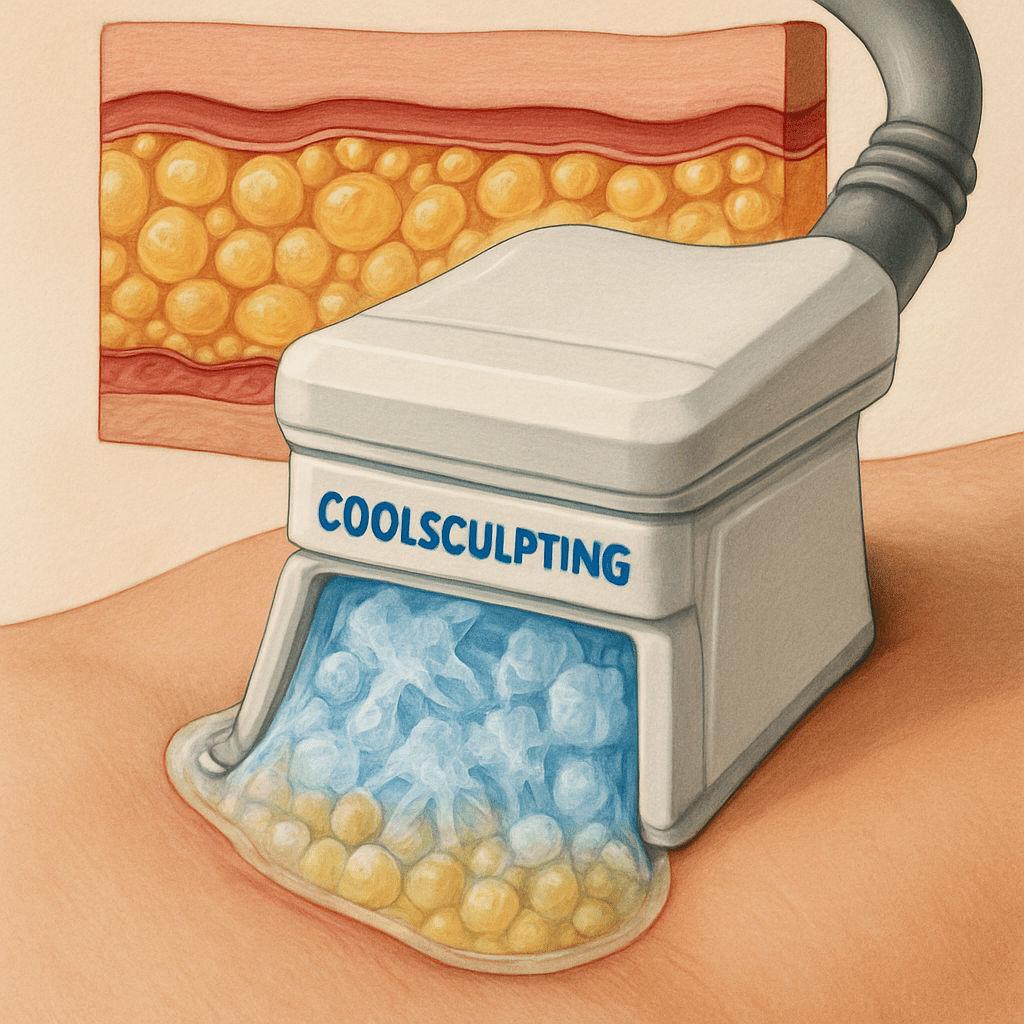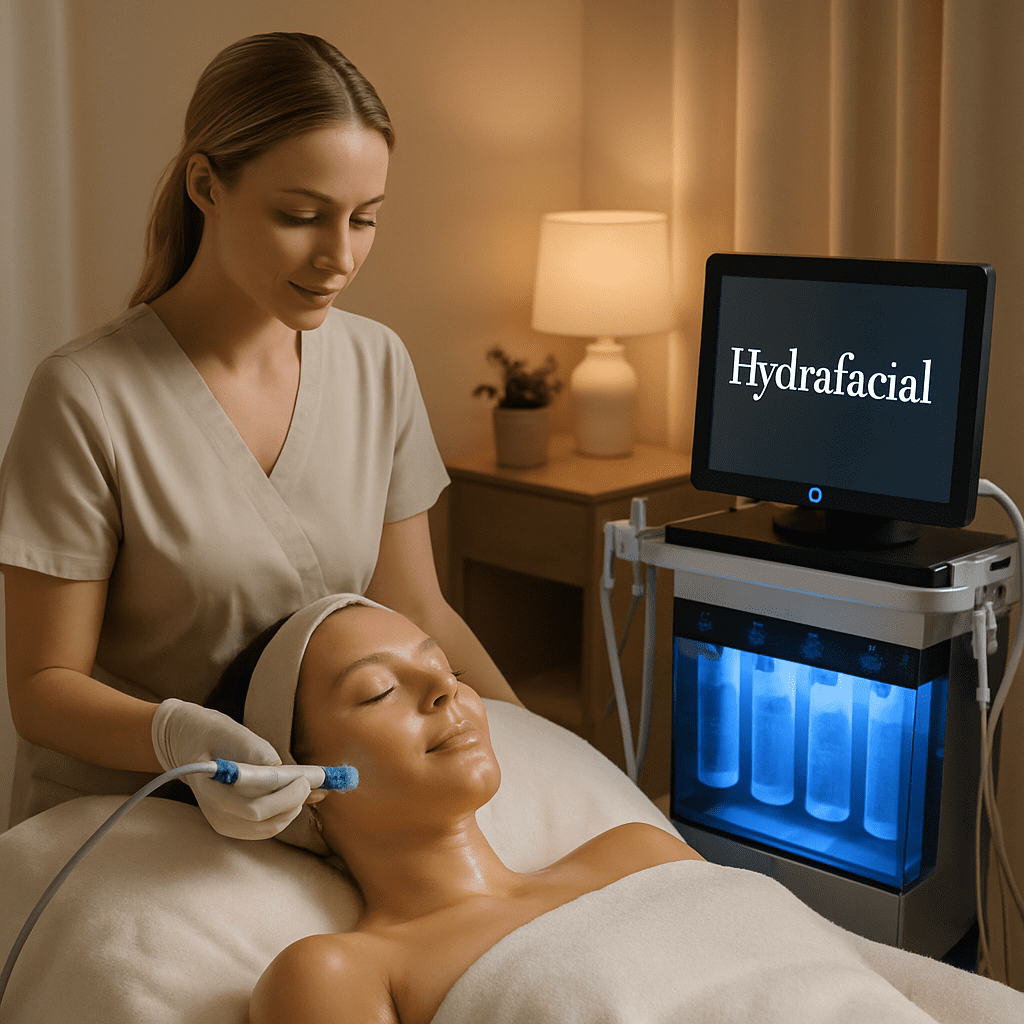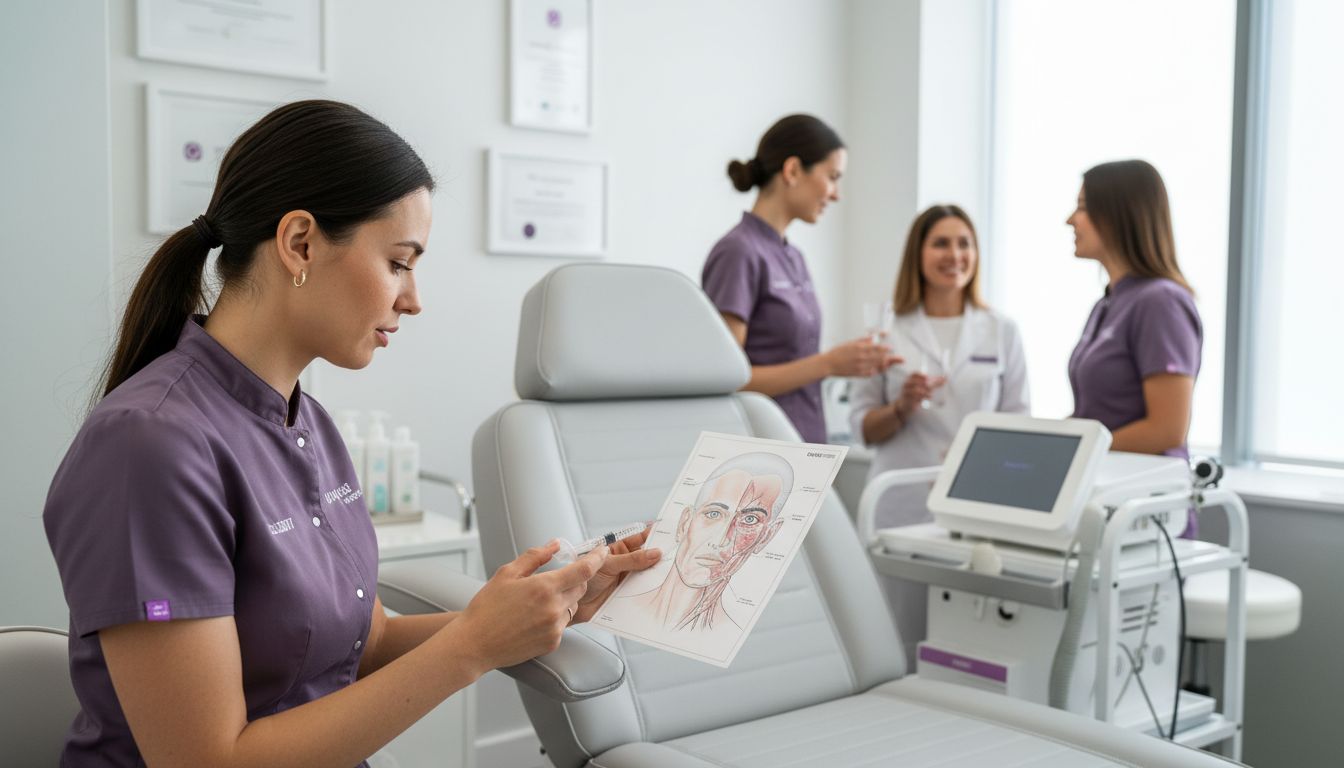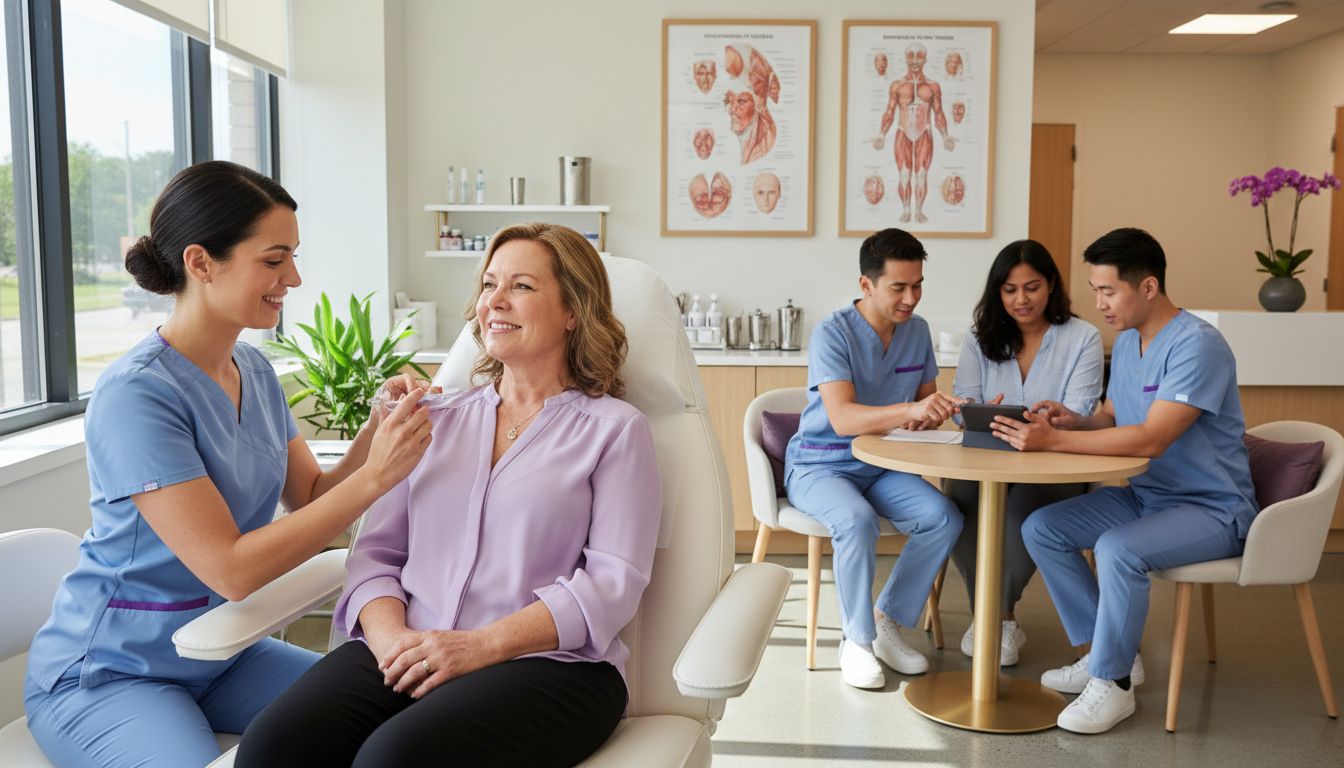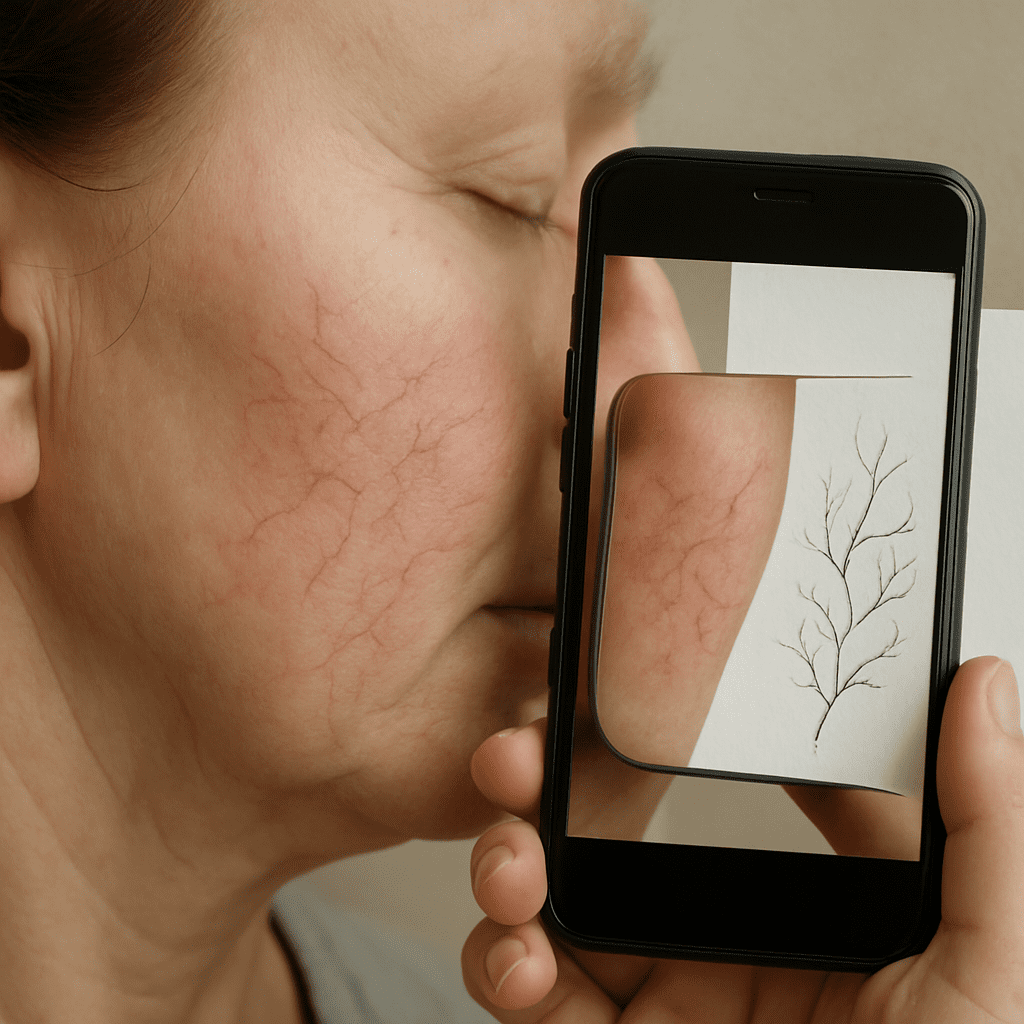You’ve probably heard about CoolSculpting as the go-to for freezing away stubborn fat without surgery. Sounds like a dream, right? But, like anything that promises an easy fix, there’s more beneath the surface. You might be wondering, “What are the coolsculpting side effects? Is it really as safe as it seems?”
It’s totally normal to feel a bit nervous before trying a treatment that literally freezes fat cells. After all, your body isn’t a science experiment. You want to feel confident, not worried about what might go wrong or how it’ll feel afterward.
Here’s the thing: knowing what to expect helps you get past the unknown and focus on results instead of fears. CoolSculpting does come with some side effects, ranging from mild tingling and redness to tenderness or slight bruising. Most folks find these to be temporary and manageable, but it’s definitely worth having the full picture before you jump in.
Think about it this way—it’s like planting a garden. Sure, you expect some dirt under your nails and a few scrapes, but it’s all part of the process to get those beautiful blooms. Same with body contouring; there might be a few side effects along the way before you get that confident, refreshed feeling.
We’ve helped many people in Barrie navigate these exact questions, making sure they feel comfortable and informed every step of the way. If you’re curious about what really happens after a CoolSculpting session, and how to handle any unexpected surprises, keep reading. You can also check out our guide on body contouring in Barrie to see how CoolSculpting fits into the bigger picture of non-surgical rejuvenation.
Ready to get clued in? Let’s dive in and peel back the layers on coolsculpting side effects so you can go in knowing exactly what to expect—and how to feel your best during the whole journey.
TL;DR
Wondering about coolsculpting side effects? Most people experience mild redness, tingling, or tenderness that fades quickly—nothing too wild.
Think of it like a brief chill after a cold swim; it’s uncomfortable but short-lived.
Knowing this helps you walk in confidently, prepared to handle those little surprises with ease.
What is Coolsculpting and How Does It Work?
Ever stared in the mirror and wished there was an easier way to tackle those stubborn pockets of fat that just don’t budge no matter how hard you try with diet and exercise? That’s where Coolsculpting steps in—a nifty, noninvasive treatment designed to freeze away fat cells without surgery or downtime.
So, what’s the magic behind it? Coolsculpting is a brand name for a fat-freezing technology called cryolipolysis. Picture this: fat cells are more sensitive to cold than the surrounding skin or muscle. That’s the key to selectively targeting unwanted fat while keeping everything else safe.
Here’s how it works in practice. The device uses a vacuum-like applicator to gently pull the fatty area (say your love handles or lower belly) into a cooling panel. You’ll probably feel a chilly sensation first—not exactly cozy, but bearable. This controlled cooling chills fat cells down to temperatures that trigger their natural death without harming skin or nerves.
After treatment, your body’s cleanup crew gets to work. Macrophages (those immune system cells you might not think about much) swoop in to digest and remove the dead fat cells over several weeks to a few months. This means you won’t see results instantly, but by around three months after a session, many notice a visible reduction in the thickness of the treated fat layer.
Now, don’t confuse this with a quick fix or weight-loss plan. Coolsculpting targets localized fat pockets, the pinchable ones you just can’t seem to shake, rather than visceral fat that sits deep around your organs. It’s not about dropping pounds on the scale but fine-tuning those contours to help you fit better into your favorite clothes.
Wondering if it’s painful? Most people report sensations like mild tugging, numbness, or tingling during and a slight soreness afterward — kind of like feeling the aftermath of a tough gym session. Because it’s noninvasive, you won’t have downtime, which means back to your daily routine pretty much right away.
Does it actually work? According to Medical News Today, studies have seen significant fat layer reductions, often between 10% and 25% per treatment area. That’s pretty impressive for a procedure you can squeeze into a lunch break. But be patient—the results build up gradually.
Also, while it’s generally safe and approved by the FDA, Coolsculpting isn’t for everyone. For example, if you have cold-sensitive conditions like Raynaud’s disease, it’s best to skip. And if you’re hoping for skin tightening, it might not give you substantial results there—though some studies hint at a mild effect, more research is needed.
If you’re curious about the side effects, we’ll get into the nitty-gritty of coolsculpting side effects in the next sections, but just know the procedure is usually mild on the discomfort scale.
Ultimately, Coolsculpting offers a clever way to chip away at those stubborn fat spots without knives or needles. It’s not a miracle cure, but it can be a solid step if you’re close to your ideal weight and want to refine your shape a bit more.
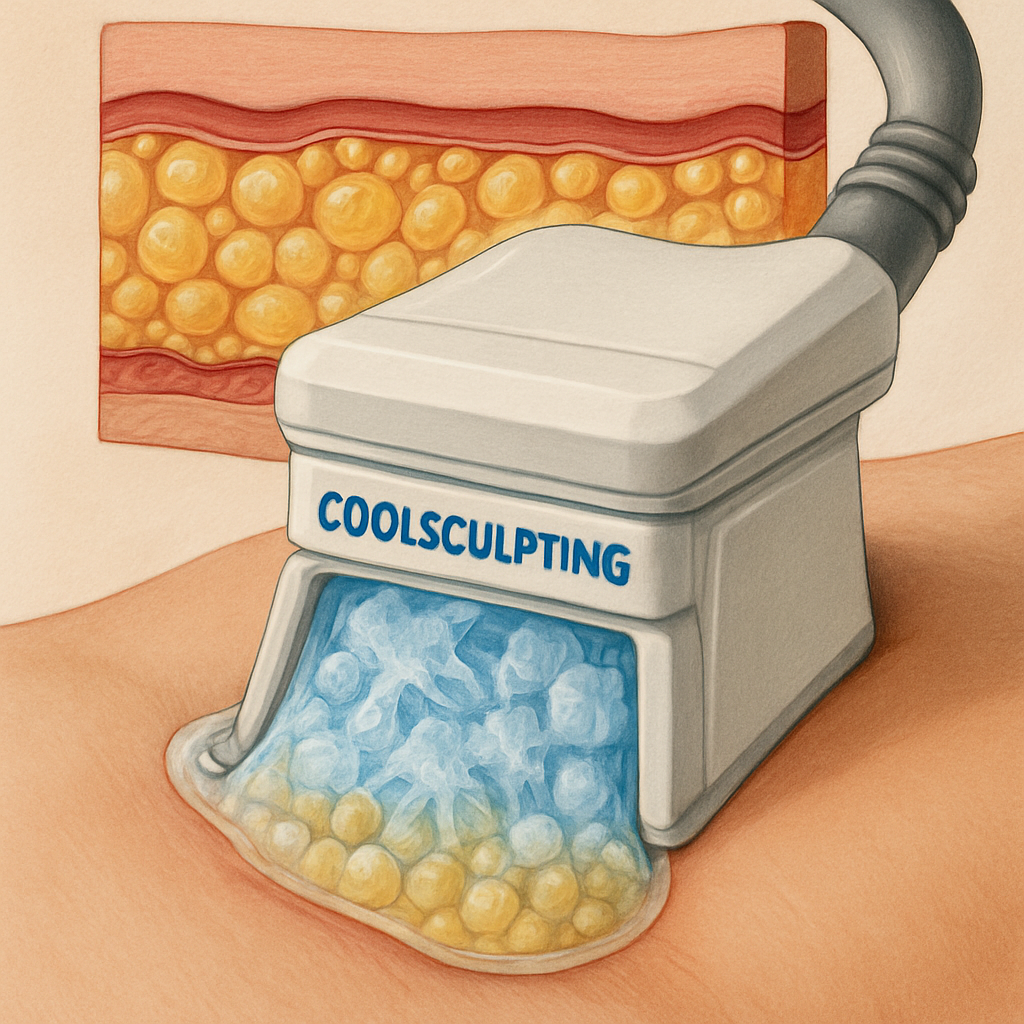
Common Coolsculpting Side Effects and Their Causes
You’ve probably heard that Coolsculpting is this nifty fat-freezing treatment that targets those stubborn spots diet and exercise can’t quite tame. And yeah, many folks love it because it’s non-invasive and has minimal downtime. But just like any treatment that’s doing a bit of remodeling under your skin, it comes with its own set of side effects.
Let’s get real though—are these side effects deal breakers? Usually not. But knowing what to expect makes the whole process less mysterious and a bit less worrisome.
The Usual Suspects: What You Might Feel Right After Treatment
Right after your session, it’s almost like your skin has had a mini icy encounter. Most people notice some redness and swelling around the treated area. That’s just your body reacting to the cold. Sometimes it feels a bit tender or bruised, especially since the Coolsculpting applicator uses suction to grab the fat bulge.
That suction can cause mild bruising, and up to about 10% of people can expect this. It’s nothing serious and usually fades within a couple of weeks. If you’ve ever bumped your arm a little harder than you meant to, you know how these bruises go—they look worse than they feel.
Then there’s some numbness or tingling—think of it as your skin’s way of signing off for a short nap post-freeze. This sensation typically lasts a few days to a couple of weeks but, in rare cases, can stick around longer. It’s a harmless but odd feeling, like pins and needles that won’t quite go away.
Why Does This Happen? (Here’s The Science Bit Made Simple)
The cold temps used in Coolsculpting freeze fat cells selectively, targeting the fat that sits just beneath your skin (subcutaneous fat). But that freezing doesn’t just hit fat cells—it can nudge nearby nerves and tissues, causing irritation. So, those aches, redness, or tingling are basically your body’s way of saying, “Hey, something cold just happened here.”
It’s a bit like when you accidentally touch a cold metal pole—your skin goes red and might sting, but it bounces back. The good news? In the case of Coolsculpting, these signs are temporary and expected.
On the Rarer Side: Paradoxical Adipose Hyperplasia
Now, this one sounds like a mouthful—paradoxical adipose hyperplasia, or PAH. But in simple terms, it’s when instead of shrinking, the fat cells grow bigger after the procedure. Yep, the opposite of what you signed up for.
It’s rare, occurring in less than 1% of cases, but it tends to pop up a bit more often in men. Doctors aren’t exactly sure what causes PAH, but they suspect it might be linked to the way the fat cells react to a less-than-perfect freeze. Maybe the cooling wasn’t cold enough to kill the cells but was enough to confuse them into growing. Genetics could also play a role.
If this happens, you’ll notice a firm, enlarged bulge where you had the treatment, typically two to five months later. The tricky part? It won’t clear up on its own and might need corrective surgery, like liposuction, to fix it. So if you spot something weird that doesn’t feel or look right down the road, definitely get it checked out.
Other Possible (But Less Common) Side Effects
Occasionally, people report skin sensitivity, itching, or even a stinging sensation once the area warms up post-treatment. Some have brief cramping or a pulling feeling, which again tie back to how your nerves respond to cold and the suction device. These sensations usually fade pretty quickly.
One more to know: sometimes, because Coolsculpting kills fat cells unevenly, the skin surface might look a little bumpy or less smooth. This is more about the contour changing unevenly rather than any real skin damage. It’s often fixable with additional sessions or a touch-up treatment.
So, What Should You Do Next?
Knowing the common Coolsculpting side effects helps you go into your treatment prepared—not caught off guard. Keep in mind, these side effects are typically mild and short-lived, fading within days to weeks.
If you ever feel discomfort beyond a few weeks, or notice unusual lumps or changes, it’s time to reach out to your provider. Early checks are comforting and keep your results on track.
And remember, Coolsculpting is about sculpting small areas, not a magic wand for weight loss. It’s best paired with healthy lifestyle choices to keep the benefits lasting.
Want to dive deeper into the safety behind Coolsculpting? Healthline’s well-rounded look at Coolsculpting risks breaks down what you need to know, straight from the experts.
Curious how the procedure actually freezes fat? WebMD gives an easy-to-understand explanation that hits all the key points without the fancy jargon.
And if you want a detailed, patient-focused view on side effects, check out this comprehensive article by Healthline. It’s honest, thorough, and exactly what you want before committing to a freeze session.
Rare and Unexpected Side Effects to Watch For
Look, most people who get CoolSculpting walk away with nothing more than temporary redness or a bit of numbness. But sometimes, something pretty unexpected shows up—that sticky, stubborn “stick of butter” lump that nobody’s really ready for.
This rare side effect is called paradoxical adipose hyperplasia (PAH). Instead of the fat shrinking, the treated area actually gets bigger and firmer, often taking on a shape that mirrors the CoolSculpting applicator itself. Imagine expecting a smooth contour, but getting a hard, bulbous patch instead.
So, why does this happen? The truth is, nobody’s exactly sure. PAH is like the curveball in an otherwise straightforward game. While traditional cryolipolysis freezes fat cells to break them down, in PAH, the fat cells multiply and grow, thickening that area rather than reducing it. It’s paradoxical, yes—but a real, documented risk.
How bad is this? Well, it’s important to know that PAH isn’t dangerous physically. But emotionally? It can be a setback, especially if you booked CoolSculpting hoping to smooth out that stubborn spot. Dealing with an oddly shaped, noticeable bulge can really shake your confidence.
Thankfully, PAH is very rare. Estimates vary a lot depending on the study and the clinic, with some saying it happens as rarely as 1 in 20,000 treatments, and others suggesting it might be closer to 1 in a few hundred. Newer CoolSculpting applicators have actually cut the risk down by three-quarters, which is encouraging news if you’re concerned about this.
If you suspect something weird is happening—like your treated area is getting bigger or feeling harder a few weeks after your session—don’t ignore it. Trust me, you want to reach out right away. Early diagnosis means better options and less stress.
What Can You Do If PAH Happens to You?
Unlike the usual side effects that melt away on their own, PAH won’t simply vanish with time. You might have to wait six to nine months for the fat to soften up enough so it can be safely treated. The go-to solution is liposuction, a surgical method that can precisely remove those stubborn bulges and restore smoothness.
It’s a bit ironic that a procedure designed to avoid surgery might lead you to require it after all, right? But honestly, if you want predictable, long-lasting results, sometimes liposuction really is the way to go.
In the meantime, keep in mind that this condition doesn’t harm your overall health—so your body is safe—it’s just the appearance that’s the issue. And with proper care, you’ll get through it.
Wondering if this means you shouldn’t try CoolSculpting? Not at all. Just make sure to choose a clinic with experienced providers using the latest equipment. Things have improved a lot over the years.
Here at Simcoe Cosmetic Clinic, we take these rare side effects seriously, and we’re fully upfront about the risks and realities. If you want to understand more about PAH and how to watch for it, check out this detailed overview on Anderson Sobel Cosmetic Surgery’s exploration of paradoxical adipose hyperplasia and also the Kalos Medical Spa’s patient-focused guide to PAH.
At the end of the day, knowing these rare but real side effects puts you in the driver’s seat. You’ll be ready to spot any unusual changes and take action quickly—so your CoolSculpting journey stays in your control. And that, honestly, makes all the difference.
Managing and Minimizing Side Effects: Tips and Treatments
Okay, so you’ve decided on CoolSculpting, but now you’re wondering about those side effects everyone’s buzzing about. It’s normal to feel a little cautious—after all, who wants to deal with unexpected bumps when all you want is a smoother silhouette?
The good news? Most coolsculpting side effects are temporary and manageable if you know what to expect and how to handle them.
Common Side Effects: What You’ll Probably Notice
Swelling and redness? Yep, those are pretty standard. Right after treatment, your body reacts to the cold by triggering a little inflammation—think of it as your immune system quietly cleaning house. You might also feel tenderness or mild bruising in the treated area. Most of this usually fades within a few days to a couple of weeks.
Sometimes, you might even notice the area looks a bit fuller initially. Sounds weird, doesn’t it? But it’s just temporary inflammation before the fat cells start dying off over the next several weeks.
And there are less common side effects like numbness, tingling, or a slight stinging sensation that can hang around for a few weeks too. Freaked out yet? Don’t be.
Smart Tips to Ease Your Recovery
So, how do you keep discomfort to a minimum and help your body bounce back quicker?
First up: hydrate. Drinking plenty of water is hands down one of your best bets to speed up your lymphatic system’s clean-up crew—it’s how your body naturally flushes away those dead fat cells.
Avoid anti-inflammatory meds like ibuprofen unless your provider says otherwise. While it might seem tempting to pop a pill to get rid of swelling, that inflammation is part of how your body processes the treatment.
Light movement actually helps too. Gentle walks get your circulation going without stressing the treated areas, helping reduce swelling and stiffness.
If soreness hits, cold compresses (think wrapped ice packs) on and off for 10-15 minutes can bring relief without interrupting healing.
Wondering about skincare? Just keep the treated zone clean and avoid anything abrasive or harsh for a week or so. And don’t skip on sunscreen—your skin needs protection especially right after treatment.
When to Reach Out: Knowing When Something’s Off
Here’s the deal. Most side effects fade, but you need to be alert for anything unusual.
If your skin turns an odd shade, if you have persistent pain beyond a couple of weeks, or if you notice unusual lumps or firm areas developing months after treatment, it’s time to check in.
That rare but talked-about hiccup called paradoxical adipose hyperplasia (PAH) shows up as firm bulges that don’t go away. It’s not common, but knowing to spot it early means you can talk to your provider about possible treatments like liposuction or injectable options.
Partnering with the Right Provider Matters
Honestly, a huge part of minimizing side effects comes down to experience. Your CoolSculpting technician should understand your unique body and design a treatment plan that matches your goals and health.
At Simcoe Cosmetic Clinic, we take this seriously. From careful patient selection to attentive aftercare instructions, we’re all about helping you get through your CoolSculpting journey comfortably.
Want to learn more about how to take care of your skin and body post-procedure? You might find our detailed guide on body contouring treatments helpful—it’s packed with tips that complement CoolSculpting recovery.
Remember, managing and minimizing coolsculpting side effects isn’t a mystery—it’s about smart care, good hydration, and a provider you can trust.
If you’re curious about swelling and how long it can last, experts at Bayou City Dermatology explain it’s highly individual but mostly temporary, so don’t panic if you see some puffiness right after treatment in their breakdown here.
Still wondering whether or not these side effects might happen to you? The Cleveland Clinic offers a thorough view on typical reactions and how rare complications like PAH really stem from procedural or equipment issues—another great reason to pick your clinic wisely according to their expert insight.
At the end of the day, a little prep and the right aftercare can make your CoolSculpting experience smooth sailing. And that’s exactly how it should feel.
Ready to take the next step? Let’s chat with one of our experts at Simcoe Cosmetic Clinic to tailor your treatment plan and make sure side effects stay in check.
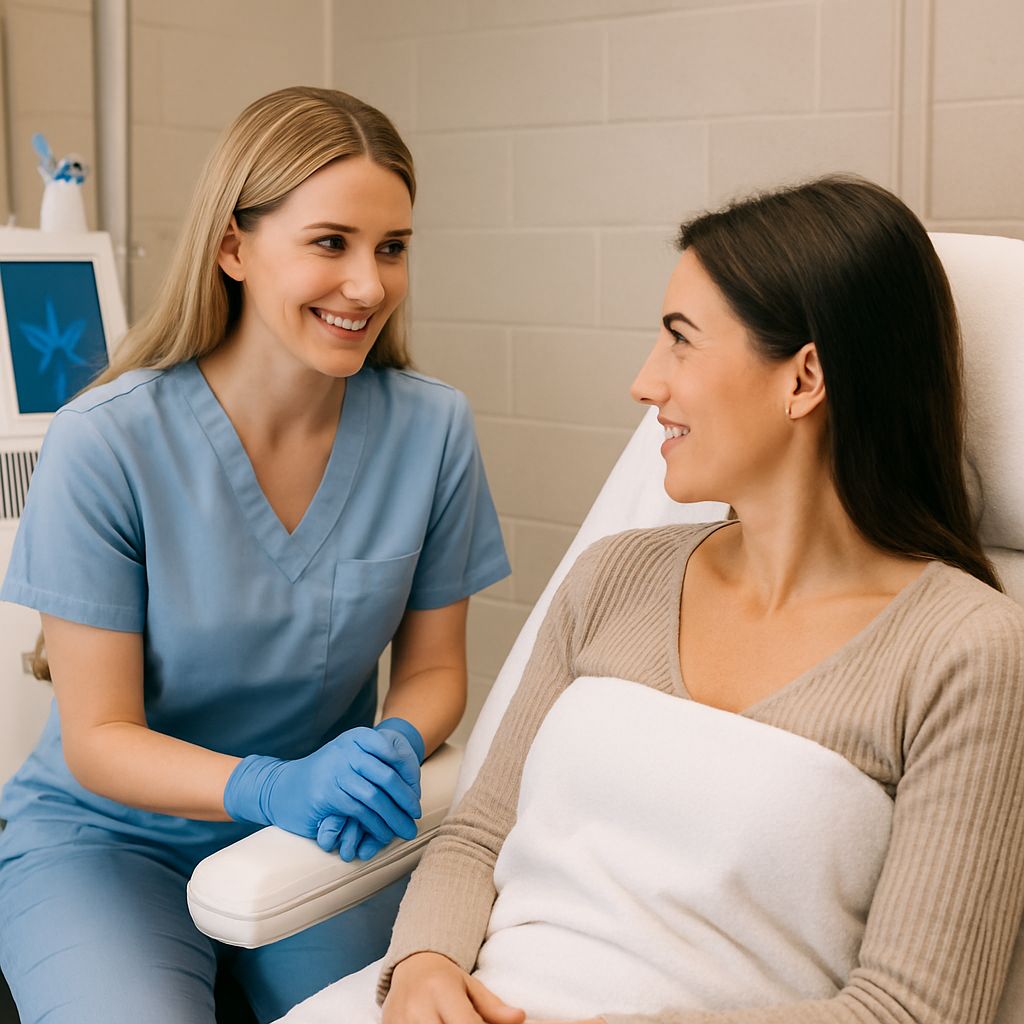
Coolsculpting Side Effects Compared to Other Fat Reduction Procedures
Ever wondered how Coolsculpting side effects stack up against other fat reduction options? It’s natural to worry—after all, anything involving your body feels personal, right?
Let’s be real: Coolsculpting feels way less intimidating than liposuction or injections. The big win? No knives or needles involved, which means a much gentler experience. But that comes with its own side effects that differ from more invasive methods.
Coolsculpting: The Ice-Cold Approach and Its Side Effects
With Coolsculpting, your body freezes fat cells to death—sounds dramatic, but it’s effective. You might feel some tugging or pinching during the treatment and numbness afterward. Swelling, redness, or bruising in the treated area are pretty common but usually settle within a few weeks. Some folks even report a bit of tenderness or a strange itching sensation as the fat cells break down.
Rarely, a condition called paradoxical adipose hyperplasia (PAH) can happen, where fat cells actually grow larger instead of shrinking. It sounds scary, but it’s quite uncommon and typically fixable with liposuction.
How Does This Compare to Liposuction?
Liposuction is another story—it’s surgery. This means cuts, stitches, and anesthesia. The side effects mirror that: pain, swelling, bruising, and possible numbness that can stick around for weeks or even months. Because the procedure is invasive, there’s also a higher risk of infection or complications like blood clots and uneven fat removal.
Recovery takes longer, too. You’re looking at days, sometimes weeks off, and more intense aftercare to keep things on track. On the bright side, liposuction removes more fat at once, so your results might be more dramatic.
What About Injectable or Laser Fat Reduction?
Heard of injections like Kybella or laser treatments? These are less common at Simcoe Cosmetic Clinic, but worth mentioning. Injections can cause significant swelling, redness, and sometimes nerve discomfort that might last longer than Coolsculpting side effects. Laser-based procedures often bring temporary redness, swelling, or skin sensitivity—it’s like your skin’s way of telling you it’s been worked on.
Each method taps into different mechanisms, so side effects reflect that. Injections disrupt fat cells chemically, lasers use heat, and Coolsculpting uses cold. Your body’s response depends on the stress it’s under.
So, which side effects hit hardest?
If gentle is your vibe, Coolsculpting usually wins. It’s non-invasive, no anesthesia, minimal downtime, and side effects that fade fairly quickly. Surgical options demand more patience and carry more risk, but they do pack a punch in fat removal.
Still confused? Here’s a quick breakdown.’
| Feature | Coolsculpting | Liposuction | Injectables/Laser |
|---|---|---|---|
| Invasiveness | Non-invasive (no cuts or needles) | Surgical (incisions, anesthesia) | Minimally invasive (needles or heat) |
| Common Side Effects | Numbness, redness, swelling, bruising | Pain, swelling, bruising, scars | Swelling, redness, skin sensitivity |
| Recovery Time | Minimal; days to a week | Several days to weeks | Variable; usually days |
| Risk of Serious Complications | Low; rare PAH possible | Higher; infection, blood clots | Low to moderate; nerve issues possible |
At Simcoe Cosmetic Clinic, we believe you should know all this before deciding. It’s not just about shrinking fat but doing it in a way that feels right for your life and body.
Curious to see if Coolsculpting’s side effects line up with your comfort zone? Chat with our team. Together, we’ll tailor a plan that considers your goals and how you want to feel during and after treatment.
Remember, no matter the method, side effects are signals. They let you know your body is adjusting. And with the right care, most coolsculpting side effects are temporary, manageable, and less intense compared to surgical routes.
Want to dive deeper into comparisons? Check out the detailed breakdown by Healthline’s CoolSculpting vs. Liposuction guide, or the Cleveland Clinic’s take on fat freezing. They offer solid insights if you like digging in.
Frequently Asked Questions About Coolsculpting Side Effects
Choosing Coolsculpting can feel like a big leap. You want to be sure you’re stepping into something safe, right? So, let’s unpack the questions we’ve heard over and over about coolsculpting side effects—because knowing what’s normal (and what’s not) really helps settle the nerves.
What are the most common side effects I should expect?
Honestly, the usual suspects are pretty mild and temporary: numbness, redness, swelling, bruising, or maybe tingling in the treated spot. These usually show up right after your session and fade within a few days to a couple of weeks. Think of it like your body saying, “Hey, I’m adjusting.” Numbness is the one that sticks around the longest sometimes—kind of weird but normal.
Could Coolsculpting cause serious complications?
Serious problems are rare, thankfully. There’s something called paradoxical adipose hyperplasia (PAH)—which sounds scarier than it is. It’s when treated fat actually bulges instead of shrinking, but it happens in a tiny number of cases. At Simcoe Cosmetic Clinic, we watch closely and plan smartly to keep risks minimal.
Will Coolsculpting hurt during or after the treatment?
The treatment itself mostly feels like an intense chill and a little tugging. Some folks say it’s uncomfortable but bearable. Afterward, you might feel tenderness or a bit of cramping like muscle soreness. If you’re worried about pain, chat with us beforehand. We want to make sure you’re comfy throughout.
How long do side effects usually last?
This varies a bit. Redness and swelling can vanish in days, bruising might show up if you’re prone to it, and numbness? Could hang around for a few weeks but fades. If anything sticks around past a month or you notice something unusual, it’s a good idea to check in with your provider.
Can I speed up recovery or lessen side effects?
Great question. Gentle massage of the treated area after your session may help. Staying hydrated and avoiding intense heat like hot tubs can ease discomfort. Also, wear comfy clothes that don’t pinch or rub the area. Little things add up.
Is Coolsculpting safe for all skin types and ages?
Most adults are candidates, but we tailor treatment to your unique skin and health. Your body’s response matters most, and we’re here to guide you so side effects don’t take you by surprise.
Still wondering if Coolsculpting fits with your personal comfort level? Let’s talk it through. Understanding the side effects helps you decide with confidence, and hey, knowing what your body might do after treatment means fewer surprises—and more high-fives when you see results.
Conclusion: What You Should Know Before Considering Coolsculpting
Thinking about Coolsculpting? It’s totally normal to feel a mix of excitement and a little bit of hesitation. After all, you’re trusting a treatment that promises to help you look and feel better without surgery. But here’s the thing—knowing what to expect with coolsculpting side effects helps take the edge off that uncertainty.
Remember, side effects like redness, swelling, or numbness are usually temporary. They can feel a bit annoying, sure, but they’re signs your body’s doing its thing and adjusting. That doesn’t mean they’re fun, but knowing they’ll fade (most times in a few days or weeks) changes how you handle them. And isn’t that what you want—a plan, not panic?
So, how do you make Coolsculpting work best for you? Start by chatting openly with your provider (hello from Simcoe Cosmetic Clinic!). Share any concerns and your health history. They’ll help tailor your treatment, making side effects manageable, and guide you on recovery steps like gentle massage or hydration.
At the end of the day, Coolsculpting isn’t magic, but it’s a solid option for those ready to tackle stubborn areas without going under the knife. If you’re clear on the side effects and comfortable with the process, you’re already on the path to more confidence—and a look that feels like you, just fresher.
Still weighing it all? Reach out. Let’s figure out if Coolsculpting fits your lifestyle and goals, so you can move forward knowing exactly what to expect.

